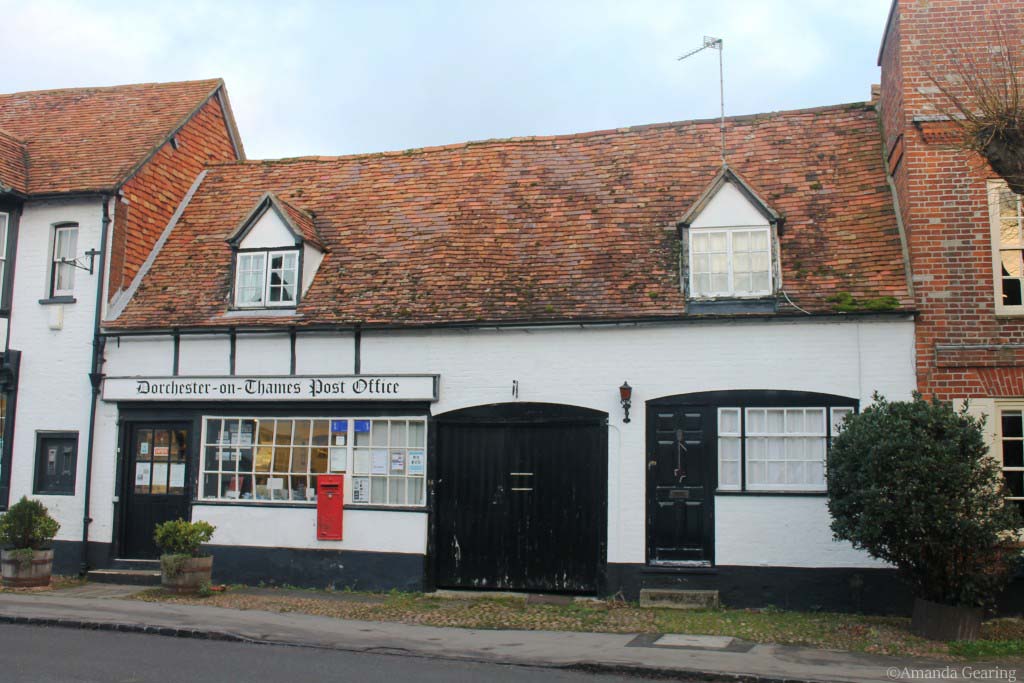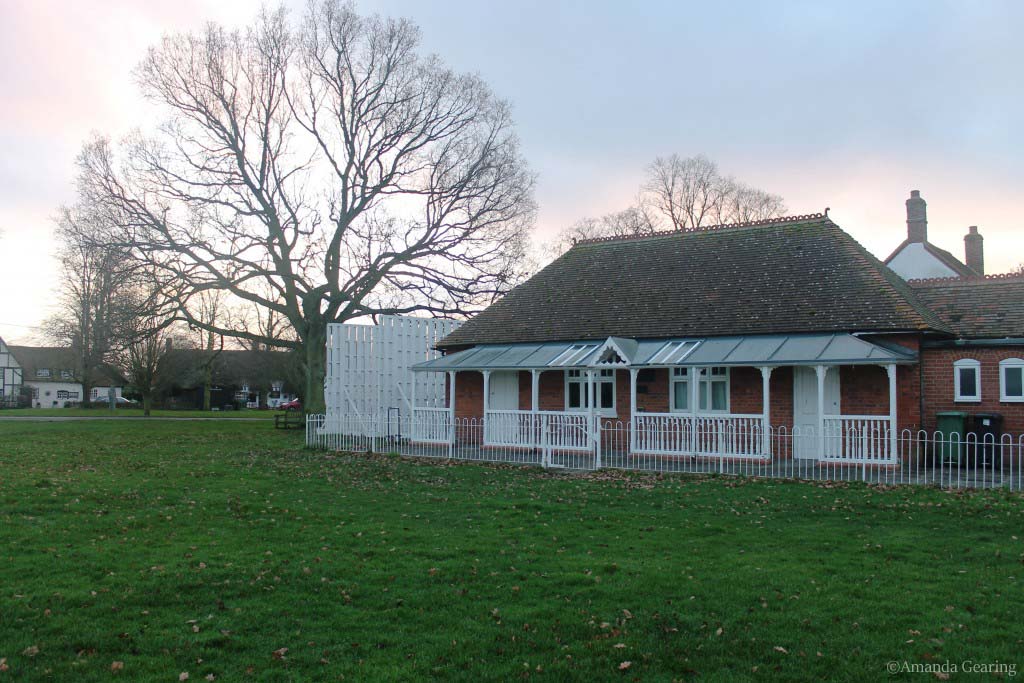Updated on July 22, 2013
A fascinating day in Midsomer – but no murders
Dorchester-on-Thames is a delightful medieval village in Oxfordshire. It has several pubs including The George Hotel.
The cast of Midsomer Murders eat at The George while they are on location and signed photos of them hang on the wall in the main room of the pub. An open fire is a welcome sight, especially in the colder months.
The food is good and the 15th century architecture is delightful. Across the road is Dorchester Abbey which is also well worth a visit.

Filming locations
The village of Dorchester-on-Thames (not to be confused with Thomas Hardy’s Dorchester further to the south) was the shooting location for several episodes of Midsomer Murders, including The Maid in Splendour, Things that go bump in the night, Dance with the dead, Dead in the water, The house in the woods, The night of the stag, Four funerals and a wedding, Small mnercies and Master class.
The nearby village of Warborough is also a popular film location ion the series and the village has been used under several different names.
Warborough features inMarket for murder, Bad Tidings, Sins of Commission, Second sight, The night of the stag, The house in the woods, The great and the good, The sleeper under the hill and The Sicilian defence.
The Six Bells, a pub in Warborough, repeatedly features as the Black Swan in the Midsomer village of Badger’s Drift.
Other villages in Oxfordshire which feature in the series include Islip, Nettlebed, Henley on Thames, Waterstock, Stoke Talmage, Stonor Park and Thame.
Twyford railway station is featured repeatedly as the fictional ‘Causton’ railway station.
Other real villages in England which become fictional villages in the series include:Wallingford, Oxfordshire which is Causton. Causton police station was represented by the former RAF Staff College in Bracknell.
Favourite filming locations include Hedsor House, Buckinghamshire, Beaconsfield, Amersham, Great Missenden, Prestwood, The Lee, Wendover, Stoke Poges, Princes Risborough, Turville, Long Crendon, Penn, Marlow, Denham, Bledlow, the Ashridge Estate, Aldbury, Little Gaddesden, Chesham, Latimer, Folkingham, Chenies, Hambleden, Haddenham, and Waddesdon; in Hertfordshire, Hemel Hempstead town, Chipperfield, Flaunden, Bulbourne, Hadley Wood, Sarratt, and Watford.
Midsomer Murders
This English detective comedy/drama is based on books by Caroline Graham and adapted for television by Anthony Horowitz. Midsomer is a fictional county.
The program has been very successful with 95 episodes made in 15 series and has been broadcast in Britain, Australia, Belgium, Bulgaria. Canada, Croatia, the Czech Republic, Denmark, Estonia, Finland, France, Germany, Hungary, Iceland, Italy, India, Japan, Latvia, Lithuania, Macedonia, the Middle East, the Netherlands, New Zealand, Norway, Portugal, Romania, Russia, Serbia, Slovakia, Slovenia, South Africa, South Korea, Spain, Sri Lanka, Sweden, Thailand, Malaysia, the Philippines, Indonesia, the Ukraine and the United States of America.
The original Detective Chief Inspector Tom Barnaby was played by John Nettles from the beginning of the series in 1997 until 2011. His replacement, the current DCI John Barnaby is played by Neil Dudgeon.
The DCI is assisted on his crime-fighting way by his Detective Sergeant. The first was DS Gavin Troy, played by Daniel Casey, followed by DS Dan Scott played by John Hopkins and then DS Ben Jones played by Jason Hughes.
Many of the fictional places created for the series have the name Midsomer as their prefix, including Midsomer Abbas, Midsomer Barton, Midsomer Chettham, Midsomer Deverell, Midsomer Florey, Midsomer Herne, Midsomer Holm, Midsomer Langley, Midsomer Magna, Midsomer Malham, Midsomer Mallow, Midsomer Market, Midsomer-in-the-Marsh, Midsomer Mere, Midsomer Morchard, Midsomer Morton, Midsomer Mow, Midsomer Newton, Midsomer Parva, Midsomer Pastures, Midsomer Priors, Midsomer Sonning, Midsomer St. Michael, Midsomer Stanton, Midsomer Vertue, Midsomer Wellow and Midsomer Worthy.
The haunting music soundtrack is a moderate-tempo waltz, composed by Jim Parker and performed most often on an electronic musical instrument, the theremin, played by Celia Sheen, and sometimes played by a solo violin.
Three CDs of the soundtrack have been released. Two of them sold out quickly and are hard to find.
Caroline Graham
Caroline Graham’s books published from 1987 – 2004 provide the basis for the screenplays of Midsomer Muders.The books are The Killings at Badger’s Drift, 1987, Death of a Hollow Man, 1989, Death in Disguise, 1993, Written in Blood, 1995, Faithful unto Death, 1998, A Place of Safety, 1999 and A Ghost in the Machine, 2004.
Dorchester-on-Thames
Dorchester is strategically located at the junction of the Thame and Thames Rivers, nine miles south of Oxford and at the crossroads of major north-south and east-west highways.
It is an ideal location as a base for exploring some of England’s finest countryside, quaint villages, stately homes and some of the oldest seats of learning.
Dorchester was settled by humans from Neolithic times. South of the town, Iron Age people occupied a hill fort on Castle Hill.
The Celts later enclosed their settlement by building the Dyke Hills, a rare example of a pre-Roman town, about half a mile from the present village.
A Saxon settlement followed. The current village is built over the original Roman walled town.
Dorchester’s importance rose after the king of the West Saxons, Cynegils, was baptised in the River Thame by St Birinus in 635.
Dorchester became the episcopal centre for Wessex and in 1140 an Augustinian monastery was founded. Dorchester Abbey was built on the old Saxon foundations.
When Henry VIII destroyed monasteries throughbout England in the 1530s, the church building was saved when a local man Richard Beauforest bought the building for £140 and left it to the village in his will.
The location of Dorchester at the interesection of major highways ensured its role as a stop-over and there are several famous inns.
Warborough
The village of Warborough was part of the royal estate of Benson until it was gifted to the Augustinian Abbey in Dorchester in about 1140, where it remained until 1847. The font in the church of Saint Laurence dates from the late 12th century and the Gothic chancel dates from the early 13th century.
The village has many quaint thatched and half-timered houses, dating from as early as 1696.
An annual festival is held in July.



Recent Comments